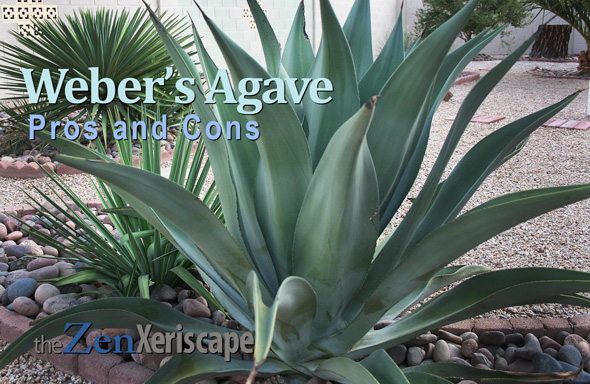A few summers ago, a number of my Weber’s agaves had rotted. Was I watering them too much, or did the agave snout weevil kill them? I’d like to figure out what happened, so I can prevent more damage in the future. So, did the agave snout weevil kill my agaves?

agave snout weevil kill my agaves?
Or both?
Photo by Doug Martin
Did the agave snout weevil kill my agaves?
Initially, I’m not sure how to answer that question. First, I’ll lay out what I do know and my experiences with this pest.
I was watering my Weber’s agaves too much
In a foolish attempt to spur growth, I was watering my Weber’s agaves too much—once a week or more! At first, that strategy was working well.
Extra water made my Weber’s agaves grow faster
Fortunately, the extra water was making my agaves grow faster. In the months that followed, I noticed a definite growth spurt from my most favorite, but normally slow-growing Weber’s agaves. I was happy!
Then, I noticed yellowing near the base
Then, around the hottest part of the year, I noticed that the base of those agaves and some of the leaves were yellowing. They were heat-stressed, I thought, so I continued giving them water every week.
The yellowing areas turned brown
Every day, it seemed like the yellowing areas got a little larger. At this point, I knew something was wrong, so I stopped watering those agaves.
Then, the yellow areas turned brown and the discoloration extended up the stem. Up until then, I had hoped I could save my Weber’s agaves.
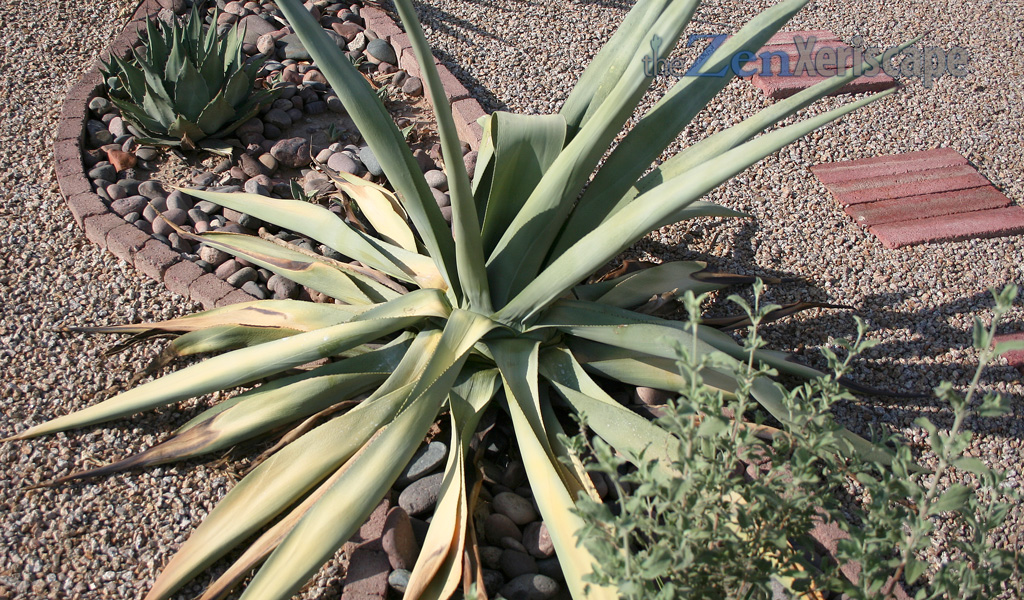
that quickly turned brown.
Then, the whole plant collapsed.
Photo by Doug Martin

By this point, it was already too late
to save my agave.
Photo by Doug Martin
Amazon Prime has attractive options, including a free 30-day trial—check them out! (As an Amazon Associate, I earn a commission from qualifying purchases.)
My agaves were rotting, and could not be saved
Despite my hopes, I finally admitted to myself that my beloved agaves were rotting from the inside out—I knew they could not be saved.
The agaves slowly collapsed, like a pancake
When I touched one agave leaf that still looked kind-of healthy, the whole plant moved. It wasn’t even affixed to its base anymore. And, it had flattened just like a pancake. It was obviously dead.
My Weber’s agaves were dead
So, I began the unpleasant task of dismantling and disposing of my beloved Weber’s agaves. They had rotted, so it was easy to pull out the leaves. However, when I did, I noticed the smell was terrible.
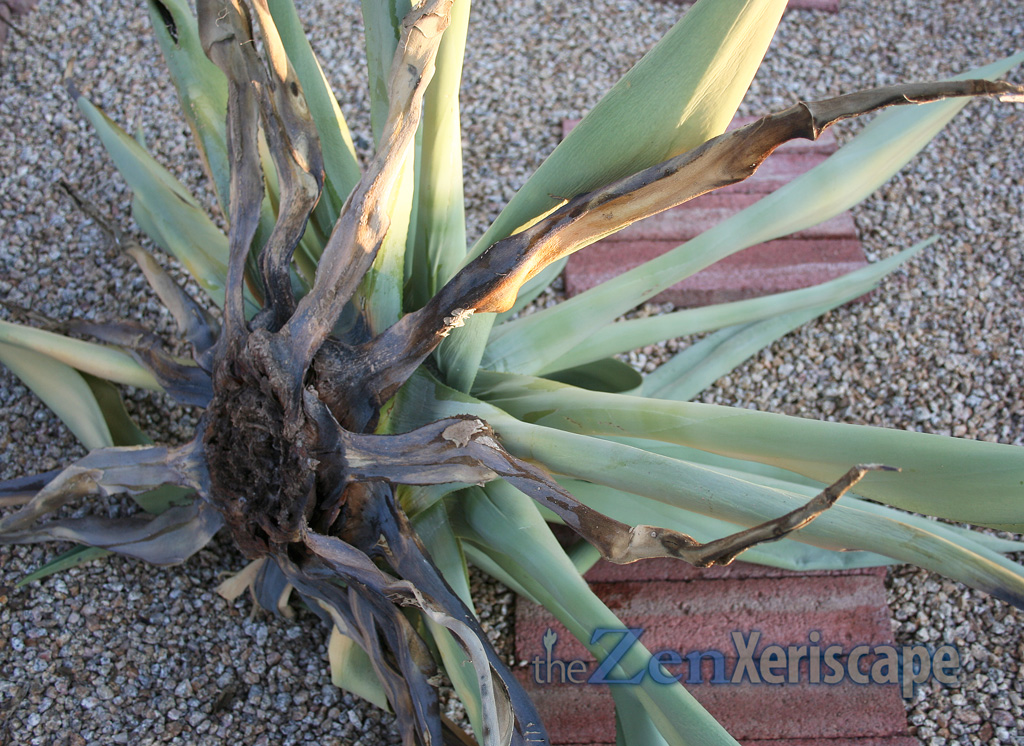
Then, I saw the agave snout weevils
and their tunnels.
Photo by Doug Martin
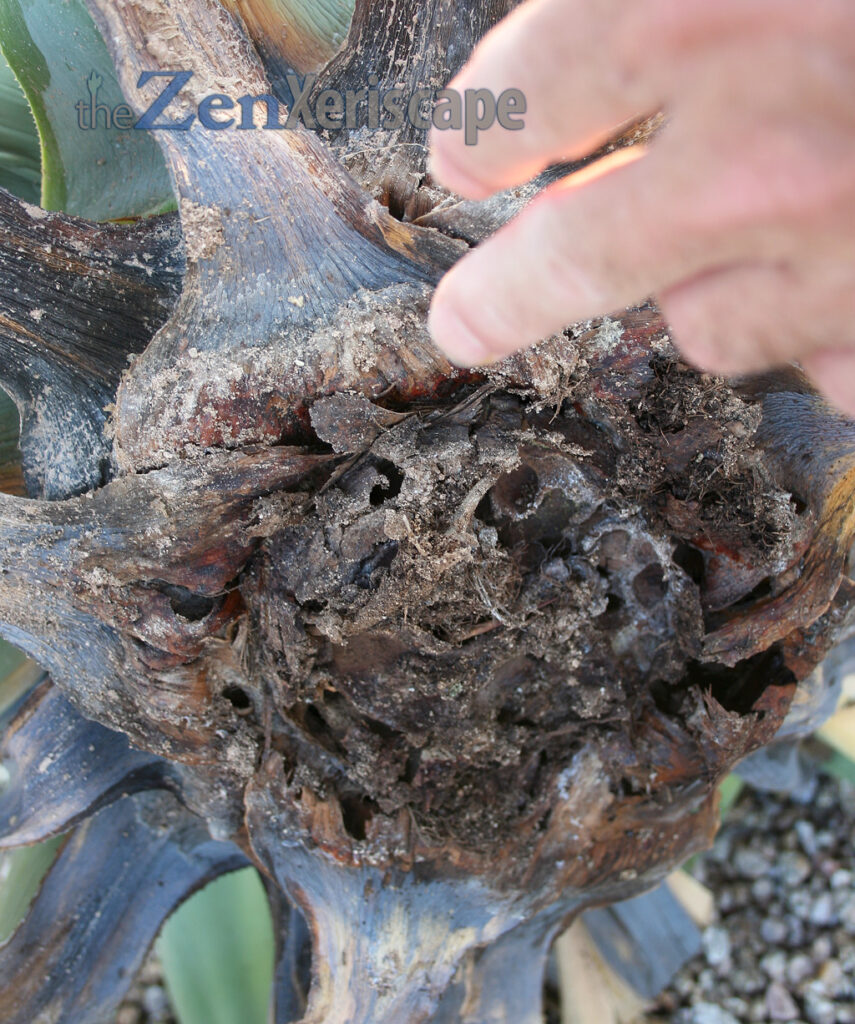
I could see the tunnels the weevils
had made for their larvae.
Photo by Doug Martin
My first sighting of the agave snout weevil
I used a shovel to flip over a plant, and then I saw those agave snout weevil creatures scurrying for safety. They had dug tunnels into the central stem or heart. Then, I also saw their opaque, slimy-looking larvae squirming around for safety, too. It was disgusting.
I grabbed some systemic insecticide and sprayed them
Quickly, I ran into the garage and grabbed whatever insecticide I had. Luckily, I had some imidacloprid systemic insecticide left over from another pest infestation, and liberally sprayed the whole area.
After I finished cleaning everything up (I disposed of everything in cardboard boxes, and sealed them with duct tape), I sprayed the whole area again.
In addition, I sprayed all around the bases of other nearby agaves, just as a preventive.
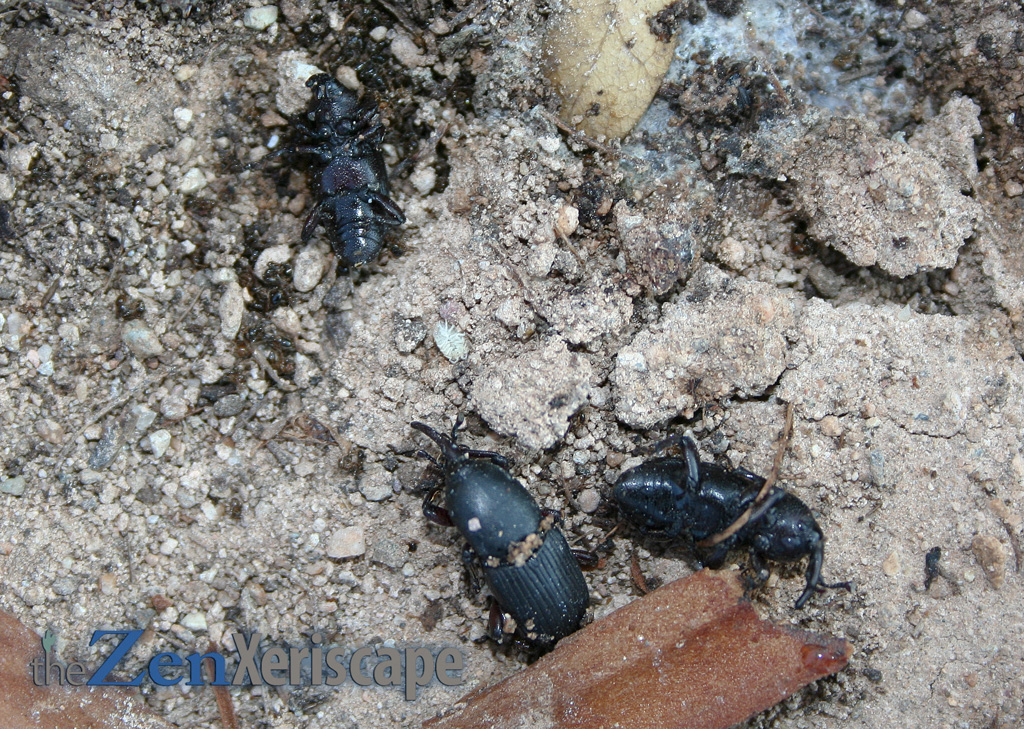
and killed some of the agave snout weevils
along with some of their larvae.
Photo by Doug Martin
You can buy this imidacloprid-based systemic insecticide from Amazon, but check the prices—I think it’s expensive. But, it does work, and I’ve also used it for another caterpillar-pest I encountered. What has also helped me, was simply to stop watering my agaves. No more rot after I simply stopped giving them supplemental water! (As an Amazon Associate, I earn a commission from qualifying purchases.)
Did the agave snout weevil kill my agaves?
My initial conclusion: agave snout weevils had killed my plants!
So, those critters had killed my precious plants? Now, it was obvious to me—yes, the agave snout weevil had killed my agaves!
Circumstantial evidence isn’t always correct
But, my conclusion was based on circumstantial evidence. Those nasty weevils just happened to be at the scene of the crime—that doesn’t mean they’re guilty!
I’ll explain…
Afterwords, I stopped watering my agaves
After that sad experience, I completely stopped watering all of my agaves. No supplemental water for them. However, I’m sure their lateral roots had extended far enough out that they could still access some water from neighboring plants.
Luckily, I still had some pups from my Weber’s agaves that had died. In fact, a year later, more of those pups emerged, some as far as four-or-more feet from their deceased parent.
Since then, I haven’t given those pups supplemental water, either. Even now, in another hot-August southern Arizona summer, they are looking stressed. But, I’m standing firm to my commitment of not watering my agaves.
No more rotted agaves
Since I had stopped giving supplemental water to my agaves, I didn’t have a single one rot. Sure, they are looking stressed in this hot Phoenix, Arizona summer (August 2025), but they’re still alive.
And, no more agave snout weevils
Even better, I haven’t seen a single agave snout weevil. Of course, they are probably good at hiding, and the only time I might see one is if they had already destroyed my agave plants.
But, why haven’t they killed any more of my agaves?
I haven’t sprayed since a couple years ago, even though I still have plenty of that imidacloprid systemic insecticide left over. So, why haven’t they turned the rest of my agaves into a rotting mess?
I reached a new conclusion—too much water had killed my agaves
Based upon my new circumstantial evidence, I have reached a new conclusion. I don’t think those agave snout weevils were the initial culprits.
I now believe that my excess watering habits had initially started the rotting process in my Weber’s agaves. Then, the weevils were attracted by the weakened plant and the agave rot, and converted it into a nesting site.
During their conversion, the weevils had introduced a bacterium, a plant pathogen that made the rotting process spread quickly. That way, their larvae could feed on the abundant, soft, rotting tissue.
To confirm my newest suspicions, I consulted AI
I asked Google’s AI (artificial intelligence), Gemini: “does the agave snout weevil really cause agaves to rot”.
It responded with the process I previously described (but with more details), and summarized: “So, while the weevil’s physical presence and feeding are part of the problem, the primary cause of death is the bacterial rot it facilitates.”
Then, I asked Gemini: “Are there any scientific studies that confirm that the agave snout weevil is the primary cause of agave rot?”
Gemini responded with sources (however, the sources didn’t look like they referenced a “scientific” study, but just circumstantial observations): “Yes, numerous scientific studies and academic sources confirm that the agave snout weevil (Scyphophorus acupunctatus) is a primary cause of agave rot. These studies don’t just point to the weevil’s physical damage but also emphasize its role as a vector for a bacterial pathogen.”
Finally, I prompted Gemini: “Could excess water have caused the agaves to rot, and then the agave snout weevils came afterwards to nest? (this scenario is what I believed happened in my landscape)”
Gemini responded: “While the snout weevil can infest a perfectly healthy agave, there is some evidence that weevils may be attracted to stressed or older plants. An agave that is already weakened by root rot from overwatering could be a more susceptible target for the weevil.
However, the key distinction is that weevils are not simply scavengers that clean up a mess. They are the ones who initiate the rot by introducing the deadly bacteria.”
And, I could go on-and-on querying AI, but you get the point! In my case, I believe that my overwatering had caused the initial rot and had weakened my agaves.
Then, acting like a scavenger, the agave snout weevil continued the process and used the plant as a reproductive site.
However, Gemini disagreed with my last conclusion. They did not believe that the agave snout weevils acts as a scavenger. Although, Gemini conceded that the weevils could have been attracted by the weakened plant!
Here’s my final, unscientific conclusion:
Did the agave snout weevil kill my agaves?
Too much water started the rot, which attracted the agave snout weevil
Excess water weakened my agaves and started the rotting process. Then, attracted by the weakened plant and the rot, the weevils came to clean it up and make a nesting site. So, without the weakened, already rotting plant, the agave snout weevil would not have shown up.
And I base that unscientific conclusion on the reality that I stopped watering my plants, which prevented the rot. Along with that, my agaves were healthy enough to not attract the agave snout weevil!
As a preventive against rot and the agave snout weevils, I won’t water my agaves!
Sources from Gemini AI:
Problems and pests of Agave, Aloe, Cactus and Yucca
https://extension.arizona.edu/sites/extension.arizona.edu/files/pubs/az1399.pdf
University of California Agriculture and Natural Resources
https://ipm.ucanr.edu/PMG/GARDEN/PLANTS/INVERT/yuccaweevil.html
Other links and references sourced by Gemini were observational, but not academic or scientific in nature, so I didn’t include those.
While helpful and very in-depth, the above links really do not provide definitive scientific conclusions. Instead, they are observational, circumstantial conclusions, just like the ones I cited in my own landscape.
Thanks for reading our article, Did the agave snout weevil kill my agaves? If you had an issue with agave snout weevils, share your experiences in the comments section below.
Get Prime! (As an Amazon Associate, I earn a commission from qualifying purchases.)
What are your thoughts about the agave snout weevil? Please share your experiences in the comment section below!
Content and photos by Doug Martin and The Zen Xeriscape



